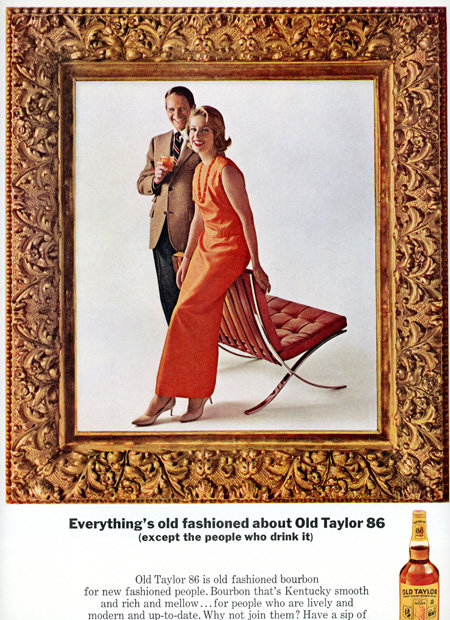Frames carry multiple messages. Around a work of art a frame can establish an emphatic border—the artwork is inside the frame/the world is outside; or it may act as an almost invisible bridge from the artwork to the wall and the room. The frame may have more to do with the décor surrounding it than the work of art within it; or a frame may serve as an ornate halo, bestowing honor or status on the work framed.
Frames appear in many forms in the media, especially in ads. If we look closely at these frames and consider their style and type, whether rich or austere, bold or delicate, we can learn something about how we are intended to perceive and understand the object within the frame and its context.
The point of these blogs is to call attention to all the things a frame can alter, affect and mean.
Here is a Life magazine ad from the 1960s. Seeing this elegant couple, posed with a Mies van der Rohe Barcelona chair, lets us know that drinking Old Taylor bourbon is cool, while the period frame assures the viewer that Old Taylor is rich with tradition and an Old Fashioned (the cocktail) made with Old Taylor will taste as it should.
Flower and leaf frames like this were used by galleries to frame works of the Impressionists, generally against the artists’ wishes, in the late 19th century, and for the same reason: to reassure insecure consumers that what they were buying was modern but not too radical.

An Old Fashioned Frame.
